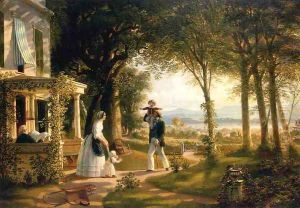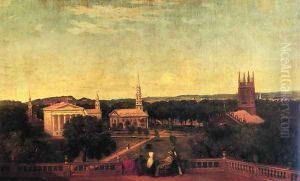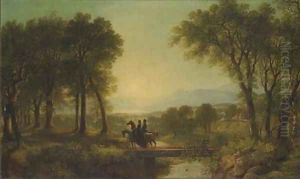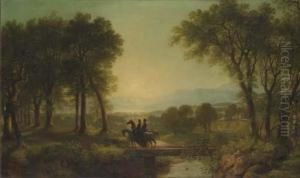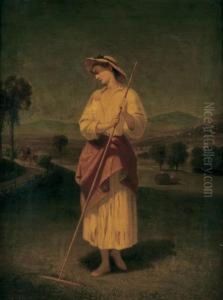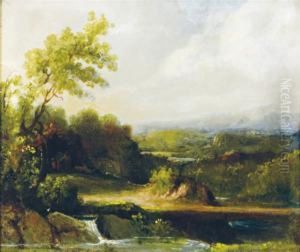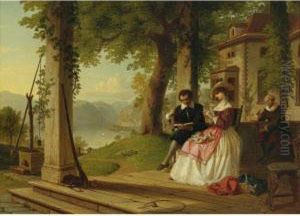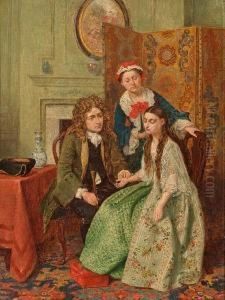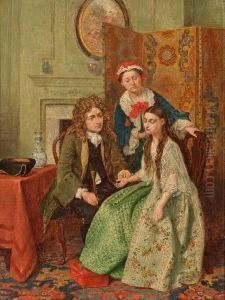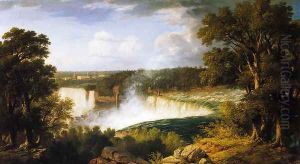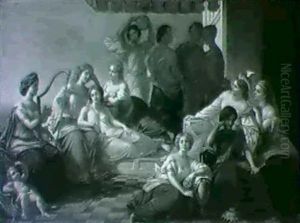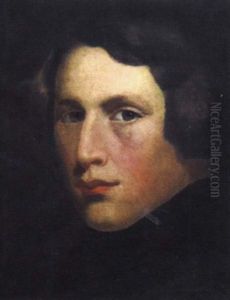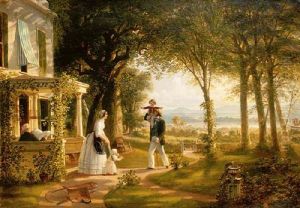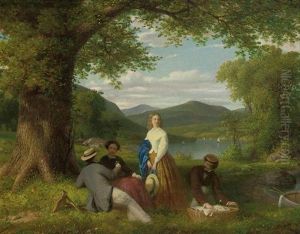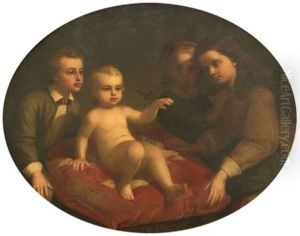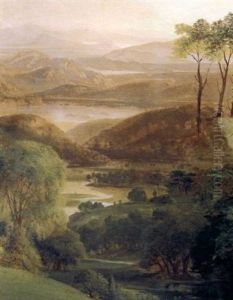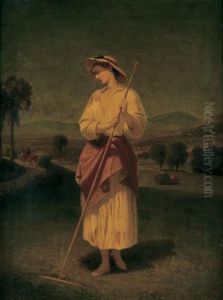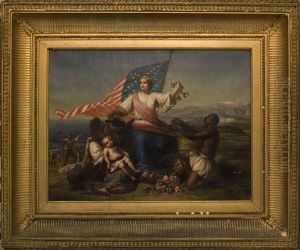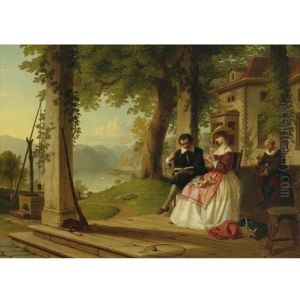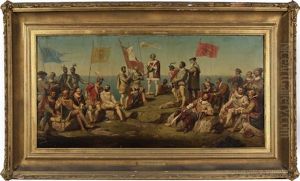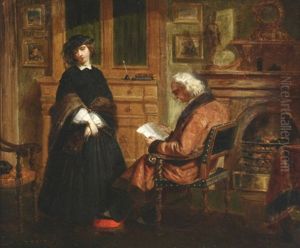Thomas Prichard Rossiter Paintings
Thomas Prichard Rossiter was an American painter known for his historical and genre subjects, as well as for his portraits. Born on July 26, 1818, in New Haven, Connecticut, Rossiter showed an early interest in the arts. In his youth, he apprenticed with a sign and carriage painter before pursuing formal artistic training. He studied with Nathaniel Jocelyn, a well-respected portrait painter, and later with Daniel Wadsworth in Hartford, who helped him develop his skills in historical painting.
Rossiter's early work consisted mostly of portraits, but as his career progressed, he began to delve into historical subjects, which were quite popular at the time. He became associated with the Hudson River School, a mid-19th century American art movement embodied by a group of landscape painters influenced by Romanticism.
In 1840, Rossiter moved to New York City, where he became part of the vibrant art community. His work gained recognition, and he started exhibiting at the National Academy of Design, eventually being elected as an associate member in 1840 and a full member in 1849. Rossiter traveled to Europe in 1846, spending time in Paris and Rome. During this period, he was heavily influenced by the Old Masters and began incorporating elements of their style into his own.
One of Rossiter's most notable collaborations was with fellow artist Louis Lang, with whom he painted a series of large historical canvases. His works during this time reflected a grandeur and scale that was influenced by his exposure to European art and his ambition to create monumental works that resonated with the American public.
Returning to the United States in 1851, Rossiter continued to work on large-scale historical paintings. He tackled themes such as the Founding Fathers and moments from American history, which were well received for their patriotic subject matter and attention to detail.
Despite his success, Rossiter faced personal challenges, including the death of his first wife and several of his children. He remarried in 1852 and continued to work and exhibit, but his prominence in the art world began to decline towards the later part of his life.
Thomas Prichard Rossiter passed away on May 17, 1871, in Cold Spring, New York. Although his name is not as widely recognized today as some of his contemporaries, his contributions to American art during the 19th century remain significant, and his works are held in various collections, including the Metropolitan Museum of Art in New York.
